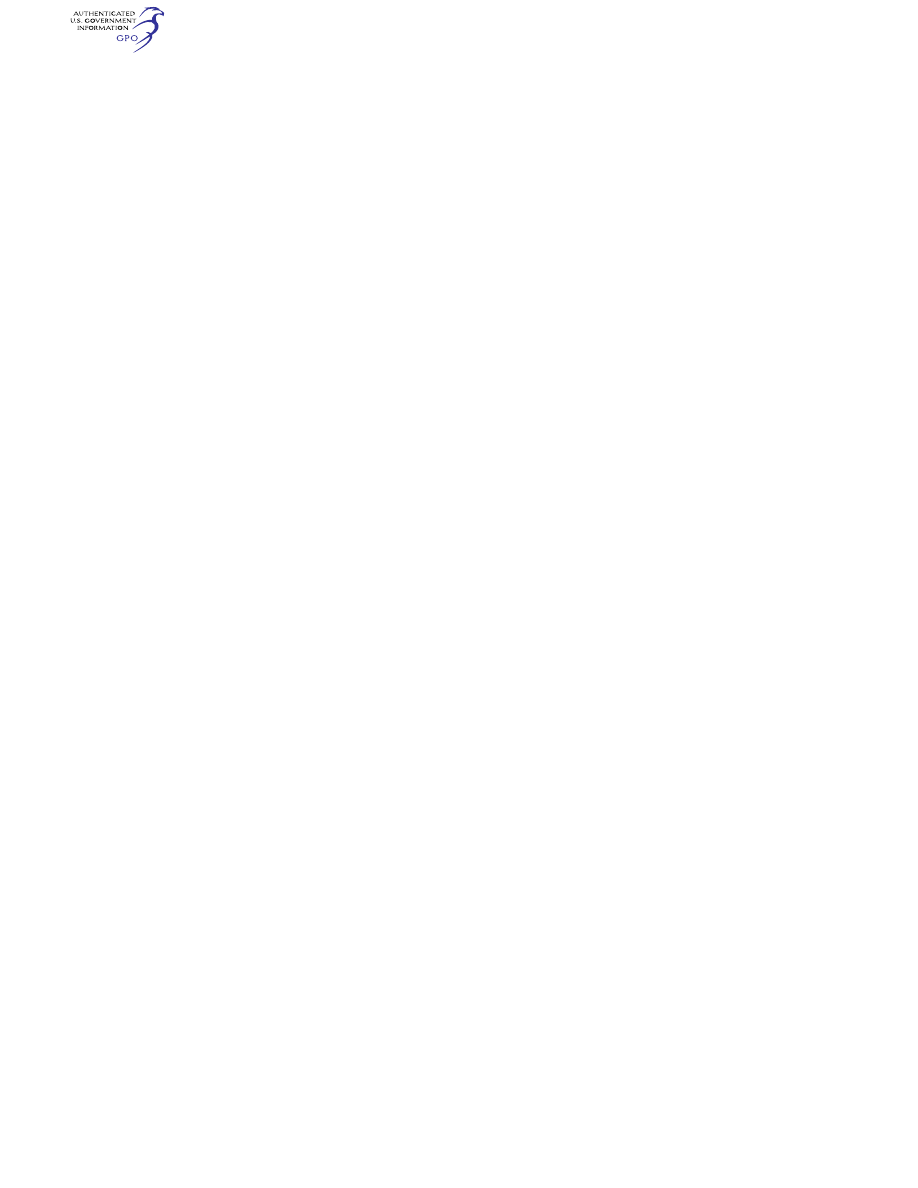
535
Federal Aviation Administration, DOT
§ 61.101
§ 61.99
Aeronautical experience.
(a) A person who applies for a rec-
reational pilot certificate must receive
and log at least 30 hours of flight time
that includes at least—
(1) 15 hours of flight training from an
authorized instructor on the areas of
operation listed in § 61.98 that consists
of at least:
(i) Except as provided in § 61.100, 2
hours of flight training en route to an
airport that is located more than 25
nautical miles from the airport where
the applicant normally trains, which
includes at least three takeoffs and
three landings at the airport located
more than 25 nautical miles from the
airport where the applicant normally
trains; and
(ii) Three hours of flight training
with an authorized instructor in the
aircraft for the rating sought in prepa-
ration for the practical test within the
preceding 2 calendar months from the
month of the test.
(2) Three hours of solo flying in the
aircraft for the rating sought, on the
areas of operation listed in § 61.98 that
apply to the aircraft category and class
rating sought.
(b) The holder of a sport pilot certifi-
cate may credit flight training re-
ceived from a flight instructor with a
sport pilot rating toward the aero-
nautical experience requirements of
this section if the following conditions
are met:
(1) The flight training was accom-
plished in the same category and class
of aircraft for which the rating is
sought;
(2) The flight instructor with a sport
pilot rating was authorized to provide
the flight training; and
(3) The flight training included train-
ing on areas of operation that are re-
quired for both a sport pilot certificate
and a recreational pilot certificate.
[Docket FAA–2016–6142, Amdt. 61–142, 83 FR
30277, June 27, 2018
§ 61.100
Pilots based on small islands.
(a) An applicant located on an island
from which the flight training required
in § 61.99(a)(1) of this part cannot be ac-
complished without flying over water
for more than 10 nautical miles from
the nearest shoreline need not comply
with the requirements of that section.
However, if other airports that permit
civil operations are available to which
a flight may be made without flying
over water for more than 10 nautical
miles from the nearest shoreline, the
applicant must show completion of a
dual flight between two airports, which
must include three landings at the
other airport.
(b) An applicant who complies with
paragraph (a) of this section and meets
all requirements for the issuance of a
recreational pilot certificate, except
the requirements of § 61.99(a)(1) of this
part, will be issued a pilot certificate
with an endorsement containing the
following limitation, ‘‘Passenger car-
rying prohibited on flights more than
10 nautical miles from (the appropriate
island).’’ The limitation may be subse-
quently amended to include another is-
land if the applicant complies with the
requirements of paragraph (a) of this
section for another island.
(c) Upon meeting the requirements of
§ 61.99(a)(1) of this part, the applicant
may have the limitation(s) in para-
graph (b) of this section removed.
§ 61.101
Recreational pilot privileges
and limitations.
(a) A person who holds a recreational
pilot certificate may:
(1) Carry no more than one pas-
senger; and
(2) Not pay less than the pro rata
share of the operating expenses of a
flight with a passenger, provided the
expenses involve only fuel, oil, airport
expenses, or aircraft rental fees.
(b) A person who holds a recreational
pilot certificate may act as pilot in
command of an aircraft on a flight
within 50 nautical miles from the de-
parture airport, provided that person
has—
(1) Received ground and flight train-
ing for takeoff, departure, arrival, and
landing procedures at the departure
airport;
(2) Received ground and flight train-
ing for the area, terrain, and aids to
navigation that are in the vicinity of
the departure airport;
(3) Been found proficient to operate
the aircraft at the departure airport
and the area within 50 nautical miles
from that airport; and
VerDate Sep<11>2014
14:00 Mar 14, 2024
Jkt 262047
PO 00000
Frm 00545
Fmt 8010
Sfmt 8002
Q:\14\14V2.TXT
PC31
aworley on LAPBH6H6L3 with DISTILLER

536
14 CFR Ch. I (1–1–24 Edition)
§ 61.101
(4) Received from an authorized in-
structor a logbook endorsement, which
is carried in the person’s possession in
the aircraft, that permits flight within
50 nautical miles from the departure
airport.
(c) A person who holds a recreational
pilot certificate may act as pilot in
command of an aircraft on a flight that
exceeds 50 nautical miles from the de-
parture airport, provided that person
has—
(1) Received ground and flight train-
ing from an authorized instructor on
the cross-country training require-
ments of subpart E of this part that
apply to the aircraft rating held;
(2) Been found proficient in cross-
country flying; and
(3) Received from an authorized in-
structor a logbook endorsement, which
is carried on the person’s possession in
the aircraft, that certifies the person
has received and been found proficient
in the cross-country training require-
ments of subpart E of this part that
apply to the aircraft rating held.
(d) A person who holds a recreational
pilot certificate may act as pilot in
command of an aircraft in Class B, C,
and D airspace, at an airport located in
Class B, C, or D airspace, and to, from,
through, or at an airport having an
operational control tower, provided
that person has—
(1) Received and logged ground and
flight training from an authorized in-
structor on the following aeronautical
knowledge areas and areas of oper-
ation, as appropriate to the aircraft
rating held:
(i) The use of radios, communica-
tions, navigation system and facilities,
and radar services.
(ii) Operations at airports with an op-
erating control tower to include three
takeoffs and landings to a full stop,
with each landing involving a flight in
the traffic pattern at an airport with
an operating control tower.
(iii) Applicable flight rules of part 91
of this chapter for operations in Class
B, C, and D airspace and air traffic con-
trol clearances;
(2) Been found proficient in those
aeronautical knowledge areas and
areas of operation specified in para-
graph (d)(1) of this section; and
(3) Received from an authorized in-
structor a logbook endorsement, which
is carried on the person’s possession or
readily accessible in the aircraft, that
certifies the person has received and
been found proficient in those aero-
nautical knowledge areas and areas of
operation specified in paragraph (d)(1)
of this section.
(e) Except as provided in paragraphs
(d) and (i) of this section, a rec-
reational pilot may not act as pilot in
command of an aircraft—
(1) That is certificated—
(i) For more than four occupants;
(ii) With more than one powerplant;
(iii) With a powerplant of more than
180 horsepower, except aircraft certifi-
cated in the rotorcraft category; or
(iv) With retractable landing gear;
(2) That is classified as a multiengine
airplane, powered-lift, glider, airship,
balloon, powered parachute, or weight-
shift-control aircraft;
(3) That is carrying a passenger or
property for compensation or hire;
(4) For compensation or hire;
(5) In furtherance of a business;
(6) Between sunset and sunrise;
(7) In Class A, B, C, and D airspace, at
an airport located in Class B, C, or D
airspace, or to, from, through, or at an
airport having an operational control
tower;
(8) At an altitude of more than 10,000
feet MSL or 2,000 feet AGL, whichever
is higher;
(9) When the flight or surface visi-
bility is less than 3 statute miles;
(10) Without visual reference to the
surface;
(11) On a flight outside the United
States, unless authorized by the coun-
try in which the flight is conducted;
(12) To demonstrate that aircraft in
flight as an aircraft salesperson to a
prospective buyer;
(13) That is used in a passenger-car-
rying airlift and sponsored by a chari-
table organization; and
(14) That is towing any object.
(f) A recreational pilot may not act
as a pilot flight crewmember on any
aircraft for which more than one pilot
is required by the type certificate of
the aircraft or the regulations under
which the flight is conducted, except
when:
VerDate Sep<11>2014
14:00 Mar 14, 2024
Jkt 262047
PO 00000
Frm 00546
Fmt 8010
Sfmt 8002
Q:\14\14V2.TXT
PC31
aworley on LAPBH6H6L3 with DISTILLER

537
Federal Aviation Administration, DOT
§ 61.103
(1) Receiving flight training from a
person authorized to provide flight
training on board an airship; and
(2) No person other than a required
flight crewmember is carried on the
aircraft.
(g) A person who holds a recreational
pilot certificate, has logged fewer than
400 flight hours, and has not logged
pilot-in-command time in an aircraft
within the 180 days preceding the flight
shall not act as pilot in command of an
aircraft until the pilot receives flight
training and a logbook endorsement
from an authorized instructor, and the
instructor certifies that the person is
proficient to act as pilot in command
of the aircraft. This requirement can
be met in combination with the re-
quirements of §§ 61.56 and 61.57 of this
part, at the discretion of the author-
ized instructor.
(h) A recreational pilot certificate
issued under this subpart carries the
notation, ‘‘Holder does not meet ICAO
requirements.’’
(i) For the purpose of obtaining addi-
tional certificates or ratings while
under the supervision of an authorized
instructor, a recreational pilot may fly
as the sole occupant of an aircraft:
(1) For which the pilot does not hold
an appropriate category or class rat-
ing;
(2) Within airspace that requires
communication with air traffic con-
trol; or
(3) Between sunset and sunrise, pro-
vided the flight or surface visibility is
at least 5 statute miles.
(j) In order to fly solo as provided in
paragraph (i) of this section, the rec-
reational pilot must meet the appro-
priate aeronautical knowledge and
flight training requirements of § 61.87
for that aircraft. When operating an
aircraft under the conditions specified
in paragraph (i) of this section, the rec-
reational pilot shall carry the logbook
that has been endorsed for each flight
by an authorized instructor who:
(1) Has given the recreational pilot
training in the make and model of air-
craft in which the solo flight is to be
made;
(2) Has found that the recreational
pilot has met the applicable require-
ments of § 61.87; and
(3) Has found that the recreational
pilot is competent to make solo flights
in accordance with the logbook en-
dorsement.
(k) A recreational pilot may act as
pilot in command of an aircraft with-
out holding a medical certificate issued
under part 67 of this chapter provided
the pilot holds a valid U.S. driver’s li-
cense, meets the requirements of
§ 61.23(c)(3), and the operation is con-
ducted consistent with this section and
the conditions of § 61.113(i). Where the
requirements of this section conflict
with § 61.113(i), a recreational pilot
must comply with this section.
[Doc. No. 25910, 62 FR 16298, Apr. 4, 1997, as
amended by Amdt. 61–110, 69 FR 44868, July
27, 2004; Amdt. 61–124, 74 FR 42558, Aug. 21,
2009; Docket FAA–2016–9157, Amdt. 61–140, 82
FR 3165, Jan. 11, 2017]
Subpart E—Private Pilots
§ 61.102
Applicability.
This subpart prescribes the require-
ments for the issuance of private pilot
certificates and ratings, the conditions
under which those certificates and rat-
ings are necessary, and the general op-
erating rules for persons who hold
those certificates and ratings.
§ 61.103
Eligibility requirements: Gen-
eral.
To be eligible for a private pilot cer-
tificate, a person must:
(a) Be at least 17 years of age for a
rating in other than a glider or bal-
loon.
(b) Be at least 16 years of age for a
rating in a glider or balloon.
(c) Be able to read, speak, write, and
understand the English language. If the
applicant is unable to meet one of
these requirements due to medical rea-
sons, then the Administrator may
place such operating limitations on
that applicant’s pilot certificate as are
necessary for the safe operation of the
aircraft.
(d) Receive a logbook endorsement
from an authorized instructor who:
(1) Conducted the training or re-
viewed the person’s home study on the
aeronautical knowledge areas listed in
§ 61.105(b) of this part that apply to the
aircraft rating sought; and
VerDate Sep<11>2014
14:00 Mar 14, 2024
Jkt 262047
PO 00000
Frm 00547
Fmt 8010
Sfmt 8002
Q:\14\14V2.TXT
PC31
aworley on LAPBH6H6L3 with DISTILLER


